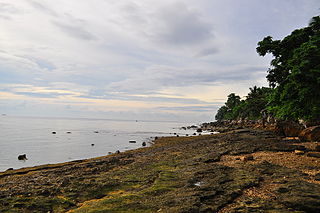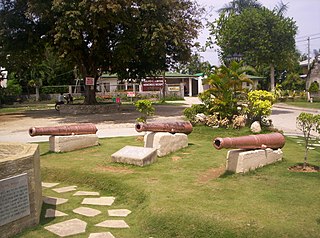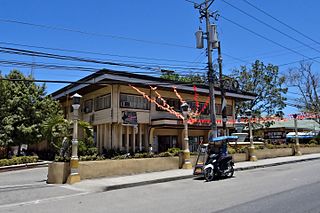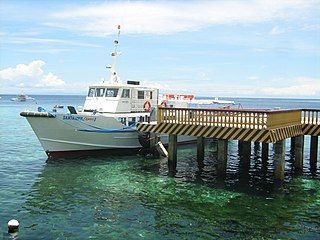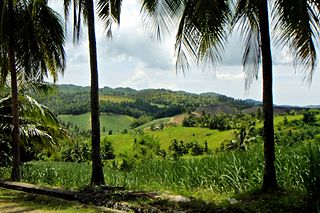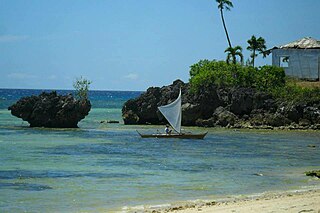A request that this article title be changed to Minglanilla is under discussion. Please do not move this article until the discussion is closed. |
This article needs additional citations for verification .(February 2016) (Learn how and when to remove this template message) |
Minglanilla | |
|---|---|
| Municipality of Minglanilla | |
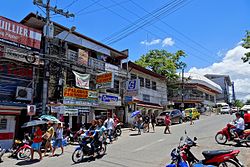 Immaculate Heart of Mary Church | |
 Map of Cebu with Minglanilla highlighted | |
Location within the Philippines | |
| Coordinates: 10°14′42″N123°47′47″E / 10.24498°N 123.7964°E Coordinates: 10°14′42″N123°47′47″E / 10.24498°N 123.7964°E | |
| Country | |
| Region | Central Visayas (Region VII) |
| Province | Cebu |
| District | 1st district of Cebu |
| Founded | 1858 |
| Barangays | 19 (see Barangays) |
| Government | |
| • Type | Sangguniang Bayan |
| • Mayor | Elanito A. Peña |
| • Vice Mayor | Loben C. Geonzon |
| • Congressman | Eduardo R. Gullas |
| • Electorate | 64,568 voters (2019) |
| Area | |
| • Total | 65.60 km2 (25.33 sq mi) |
| Population (2015 census) [3] | |
| • Total | 132,135 |
| • Density | 2,000/km2 (5,200/sq mi) |
| • Households | 30,127 |
| Economy | |
| • Income class | 1st municipal income class |
| • Poverty incidence | 13.46% (2015) [4] |
| • Revenue | ₱266,403,577.84 (2016) |
| Time zone | UTC+8 (PST) |
| ZIP code | 6046 |
| PSGC | |
| IDD : area code | +63 (0)32 |
| Climate type | tropical climate |
| Native languages | Cebuano Tagalog |
Minglanilla, officially the Municipality of Minglanilla (Cebuano : Lungsod sa Minglanilla; Tagalog : Bayan ng Minglanilla), is a 1st class municipality in the province of Cebu, Philippines. According to the 2015 census, it has a population of 132,135 people. [3]
Contents
- History
- Geography
- Barangays
- Climate
- Demographics
- Economy
- Culture
- Churches
- Festivals
- References
- External links
Minglanilla is bordered to the north by the City of Talisay, to the west is the city of Toledo, to the east is the Cebu Strait, and to the south is the city of Naga.
Minglanilla lies within Metro Cebu. It is known as the "Sugat Capital of the South". (Sugat in Cebuano means meeting.) The Kabanhawan (Cebuano for "Resurrection") festival is held annually on Easter Sunday.
A big socio-religious event in Minglanilla is the Sugat, which attracts not only people from adjacent towns but also from Cebu city and further. On Black Saturday night, a public dance is held at the church plaza to witness the re‑enactment of the "meeting" of the risen Christ and his mother. Their images, borne on richly decorated carrozas, meet amidst joyous songs and the presence of child angels suspended by wires.






